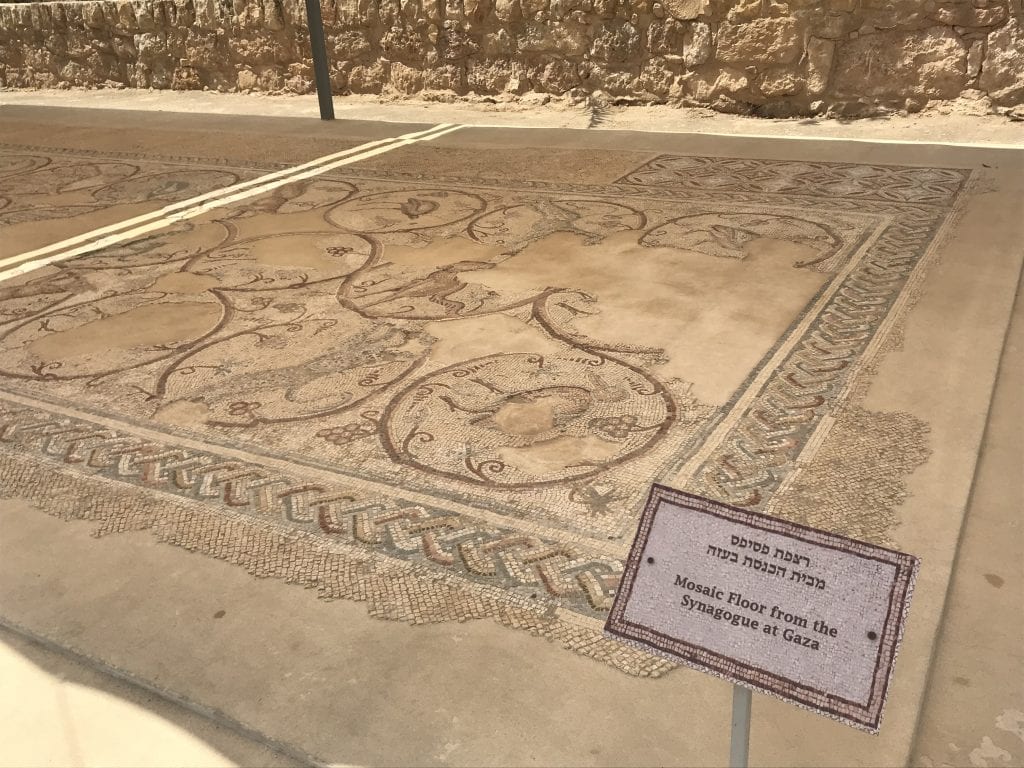Situated just 15 minutes east of Jerusalem, Ma’ale Adumim (Red Ascent) is an urban community in Israel’s Judean Adumim region, named after biblical references that describe the boundary of the tribe of Judah and taking its name from the red rock lining the ascent to Jerusalem from the Dead Sea:
“The boundary ascended from the Valley of Achor to Debir and turned north to Gilgal, facing the Ascent of Adummim which is south of the wadi; from there the boundary continued to the waters of En-shemesh and ran on to En-rogel.” (Joshua 15:7)
“Curving northward, it ran on to En-shemesh and ran on to Geliloth, facing the Ascent of Adummim, and descended to the Stone of Bohan son of Reuven.” (Joshua 18:17)
The community is much more than a residential area – it features various stunning, cultural, educational, and historical sites related to the Bible. Breaking Israel News toured four of these sites with Tour Adumim founder and director, Shelley Brinn, who seeks to showcase the area’s diversity, beauty, and biblical value.
Brinn, whose previous positions included program manager of aliyah and absorption for the city of Ma’ale Adumim, told Breaking Israel News, “Touring in the Maale Adumim Region makes the bible come alive – riding on the ancient Pilgrimage Route that both Jews and Christians used from the Second Temple Period on, seeing the city of Jericho and hearing the story of its conquest as described in the Book of Joshua, spending time in the Judean Desert where kings and prophets roamed and of course riding camels and seeing the shepherds with their flocks of goats and sheep is so reminiscent of biblical days.”
“I am passionate about the region of Ma’ale Adumim, which borders both the tribes of Judah and Benjamin. The desert landscapes, the natural springs, the artists, and the ancient olive trees bring me back to biblical days when the children of Israel lived here after crossing over the Jordan River and settling in their homeland,” she said.
These are four of her favorite biblical sites in Ma’ale Adumim:
Moshe Castel Art Museum
Moshe Castel, a 15th generation descendant of Jews expelled from Spain, was born in 1909 in Jerusalem. After finishing his studies at Bezalel School of Arts, Castel traveled to Paris, the art capital of the world at the time. There, he met many famous artists including Picasso, Matisse, and Chagall, each of whom influenced his art. When he returned home to the holy land, he settled in Safed and grew the art scene in the city, now famous for both Jewish art and mysticism. In Safed, his work began to reflect the local character, often portraying biblical stories such as the love story between Jacob and Rachel.
He maintained that Israeli art, which he sought to develop, must have its origin in biblical stories: “I experienced Safed with every fiber of my being. Within me lives the memory of my forefathers who lived on this Land […] I passed through every circle of hell in European art until I returned here. I want to take the first step towards original Israeli Art, which does not yet exist. Its roots must thrust deep into our past – to the world of the Bible.”
Good Samaritan Inn Mosaics Museum
A New Testament story tells of the Samaritan who helped out a fellow man. The parable tells of a man who was robbed and left injured on his way to Jerusalem. A Cohen and a Levite passed by and did not help him, but a Samaritan helped the injured man, brought him to the inn, and paid for his lodging there. In Christianity, the parable is a symbol for helping others in times of need without expecting anything in return. The story has also led to modern day laws that require citizens to help others in times of need.
The museum contains mosaic floors from Byzantine Period synagogues, churches, and Samaritan synagogues dating back to the fourth through seventh century CE.

Ptil Tekhelet Factory Program (Blue Dye for Tzitzit)
The Ptil Tekhelet educational factory demonstrates the process of a blue dye extraction and application used in making the tzitzit tassels. The heavenly and mysterious color, mentioned 49 times in the Hebrew Bible, was later chosen as the central color of

Israel’s national flag. The source of the color: a glandular secretion of murex snails indigenous to the Mediterranean shores, near Haifa.
The Israelites were commanded to tie tekhelet threads to the corners of their garments as a reminder of God and his commandments:
“Speak to B’nei Yisrael and instruct them to make for themselves fringes on the corners of their garments throughout the ages; let them attach a cord of blue to the fringe at each corner.” (Numbers 15:38)
Now, the biblical color is seeing a revival, with people once again wearing tekhelet on their tzitzit, largely credited to the Ptil Tekhelet Factory.
Hike, swim at Ein Maboa Nature Reserve
A unique spring in the northern Judean Desert, Ein Maboa features a hiking path, waterfalls a picnic area, a natural pool, caves, and mosaic floor. The spring is connected to the larger Ein Prat, part of the riverbed that carries water from Jerusalem to the Jordan River. Along the streams, one can find remains of ancient water systems and Byzantine monasteries, as well as the Fara Ruins, above the northern bank of Ein Prat. Archaeological remains include potsherds, a large wall and burial grounds that suggest the area could have been the biblical city of Parah, mentioned in Joshua 18:23 as a Binayminite tribe.
Every day, the spring completely empties and refills again, a process in which water drips through the limestone ground, filling up a karstic cave. The pool empties out and the process begins again.





